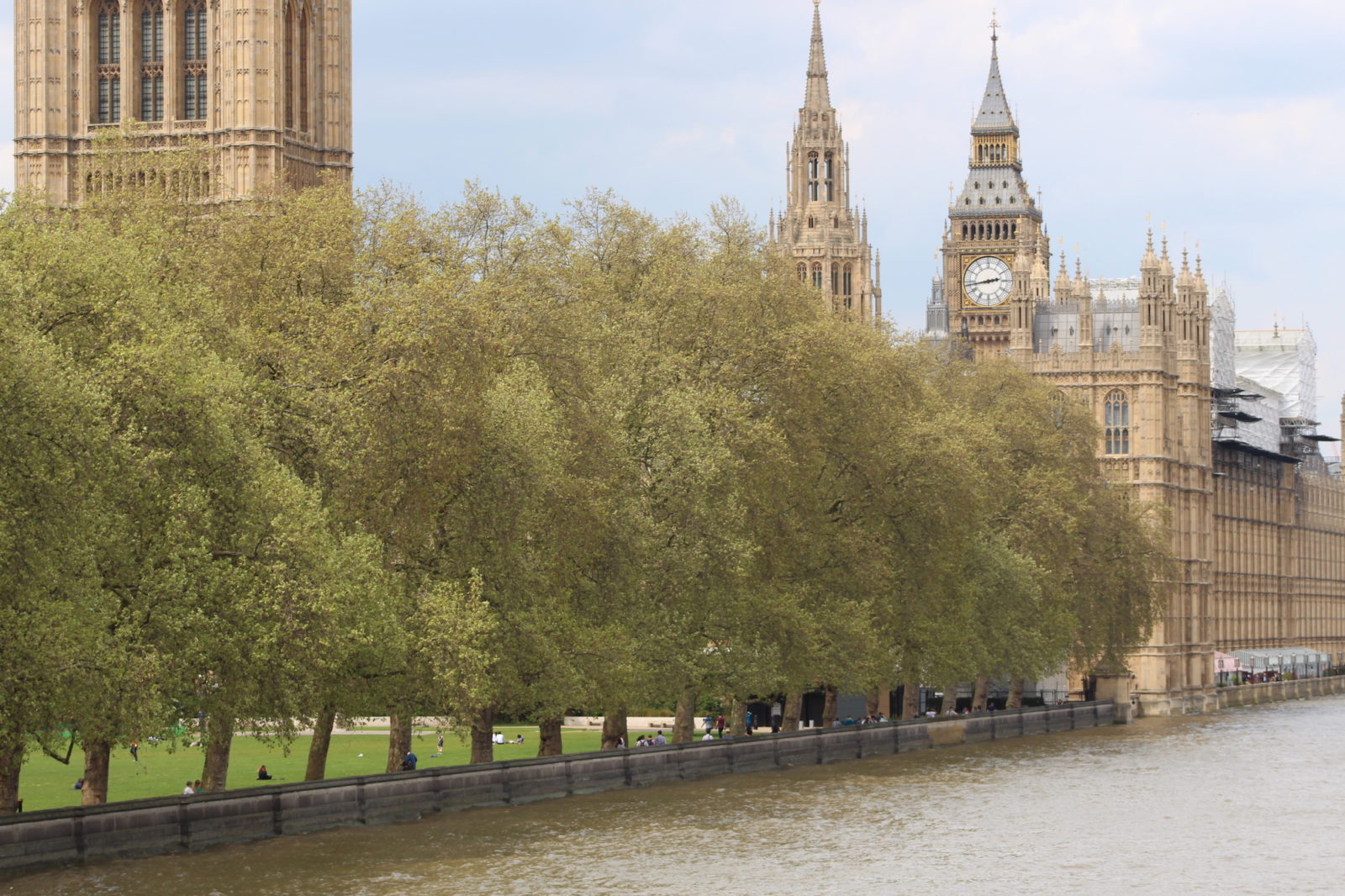
A cherished Thames-side park in central London at risk
Since first posting this article in September, 2019, the government has given the go-ahead for a Holocaust Memorial and underground learning centre right by the river Thames. However, rather than a memorial to the Holocaust, blending in with those already existing in the park, the design chosen is an ugly, domineering, over-development of the space, much criticised by architects, and many others.
For those who know and love the gardens, and for those who care about our London riverside heritage, here is a re-post of the article to remind you of what we have been fighting for and what we all stand to lose.
**************************************
Perhaps not many of you will know this park by name, though you might have passed it along the river, or sought refuge there after a visit to Parliament Square and the Palace of Westminster, but you will have undoubtedly seen it as the backcloth to countless news reports over the years and particularly at this time.
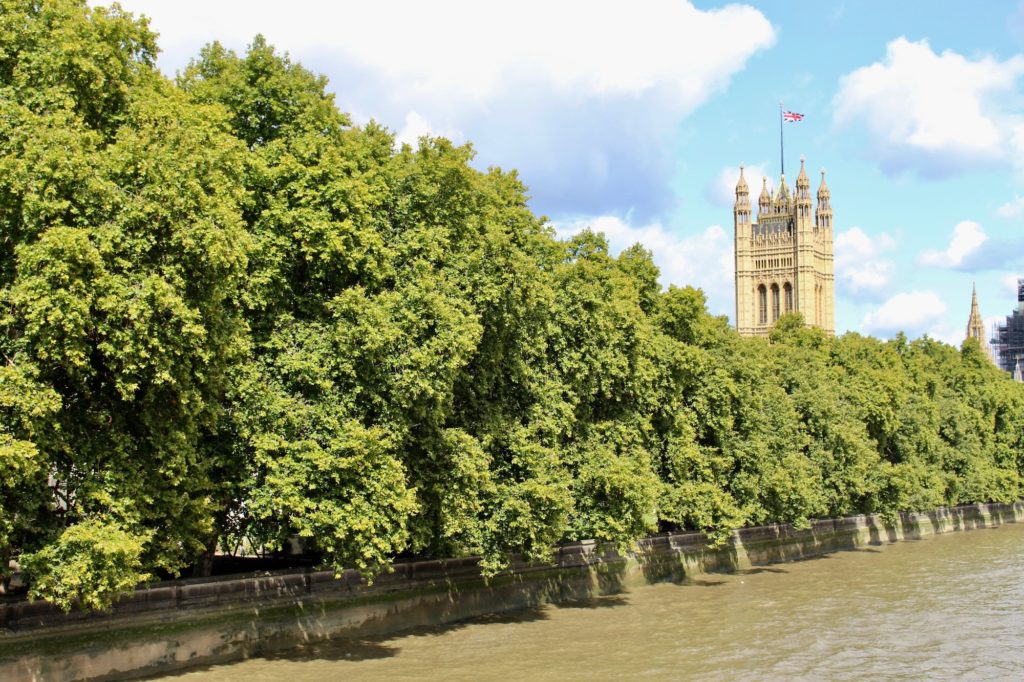
With its uncluttered central green space bordered by mature London plane trees, the atmosphere is relaxed. A recently upgraded children’s playground, a small kiosk serving coffee and snacks, and several benches along the side overlooking the Thames all add to this feeling. A park for all seasons, managed by London’s Royal Parks it is freely accessible to visitors, locals, and workers alike.
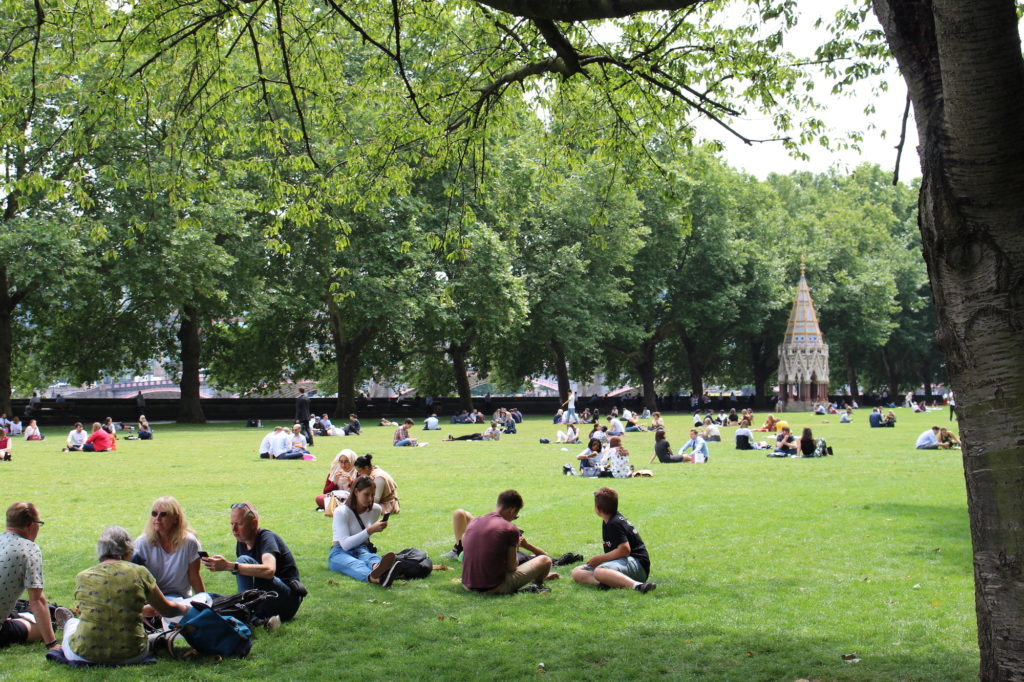
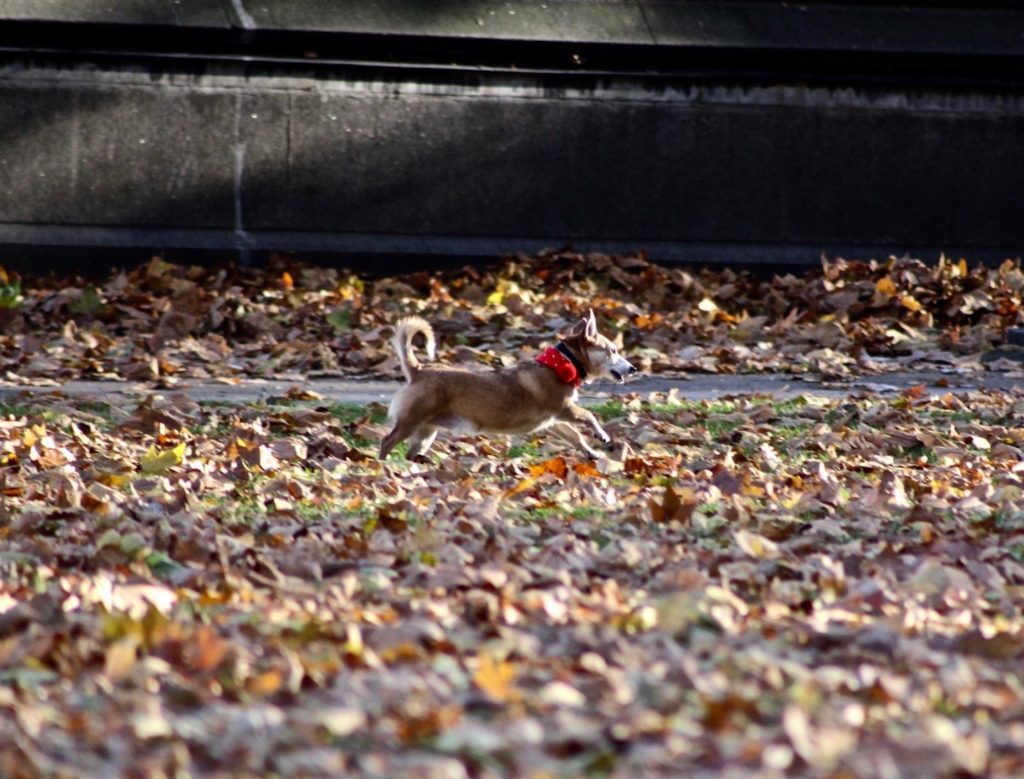
Together, Victoria Tower Gardens and Victoria Gardens South, cut by the approach to Lambeth Bridge, narrow progressively like a shard from their border with the Palace of Westminster, to a gate leading onto Millbank.
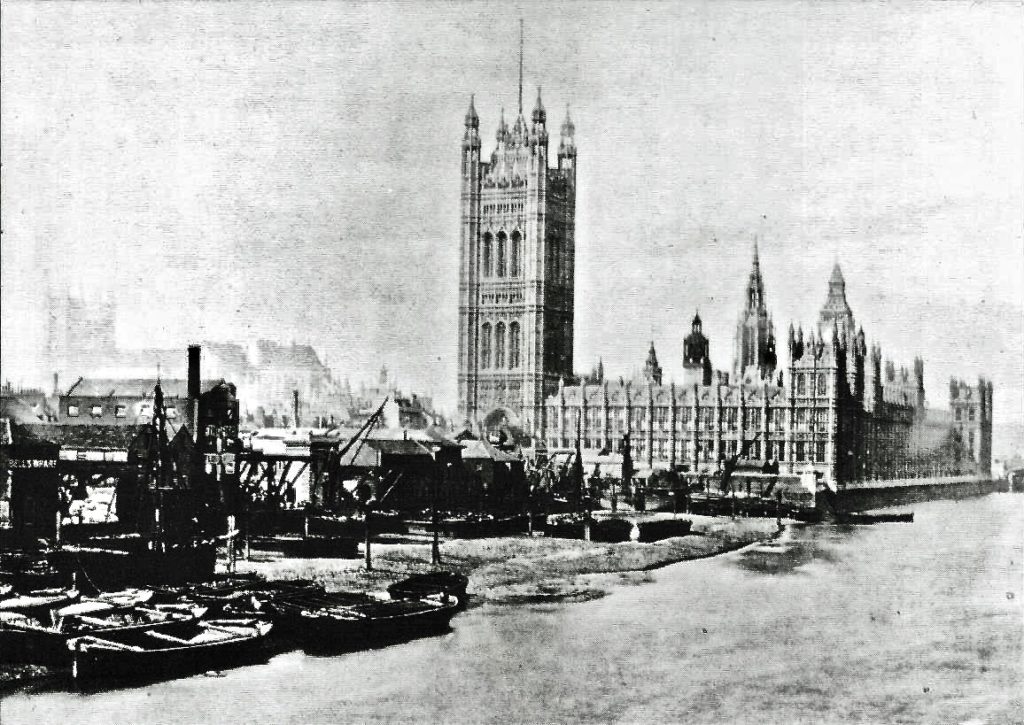
Part of the gardens was first created in 1879 during the construction and installation of a proper sewage system designed for London by the Chief Engineer of the Metropolitan Board of Works, Joseph Bazalgette. He was brought in after the renowned “Great Stink” in 1858, which made London, and particularly the Houses of Parliament, thoroughly unpleasant and virtually impossible to do business in.
The substantial works, land reclamation and the building of the Thames Embankment, meant that the long-established riverside wharves and warehouses, represented in so many works of art, were dismantled between 1880 and the early 1900s.
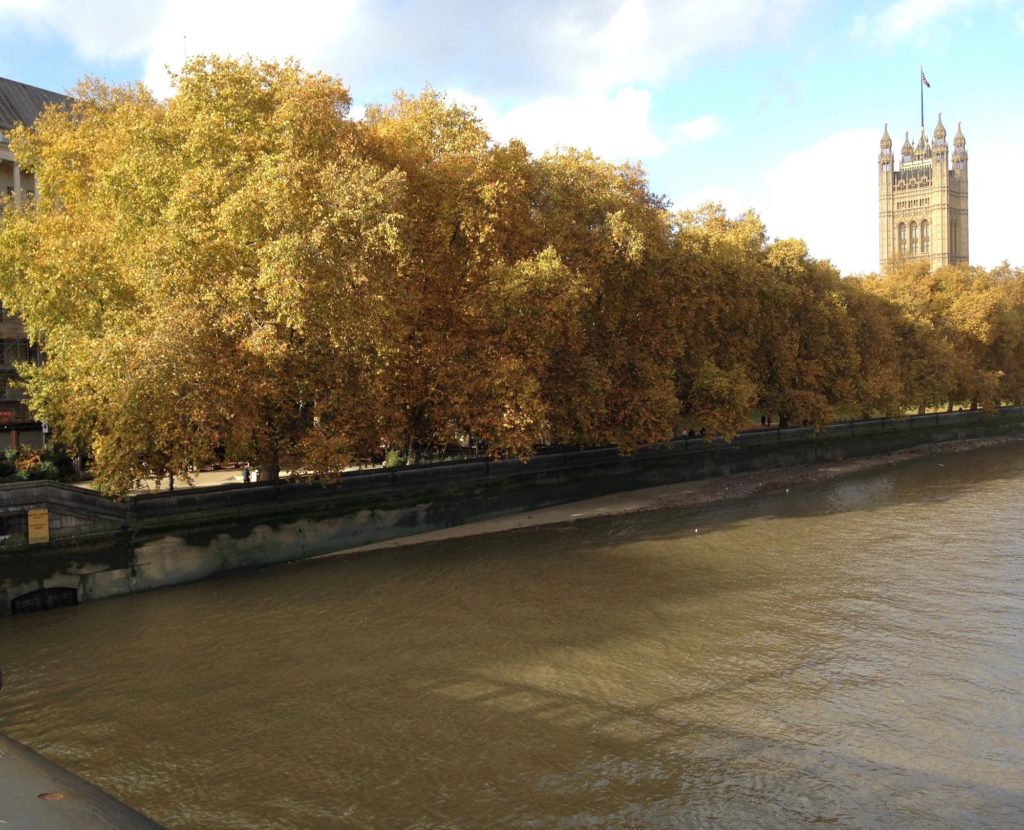
The Ordnance Survey map of 1872 covering the site, marks the Police Lodge; a path leading to a side entrance to the House of Lord; a small planted area; and an empty space next to Abingdon Wharf, the most northerly of several wharves, including coal and stone wharves, an oil factory, cement works and flour mills. You can see remnants of this industrial and commercial past on the foreshore at low tide.
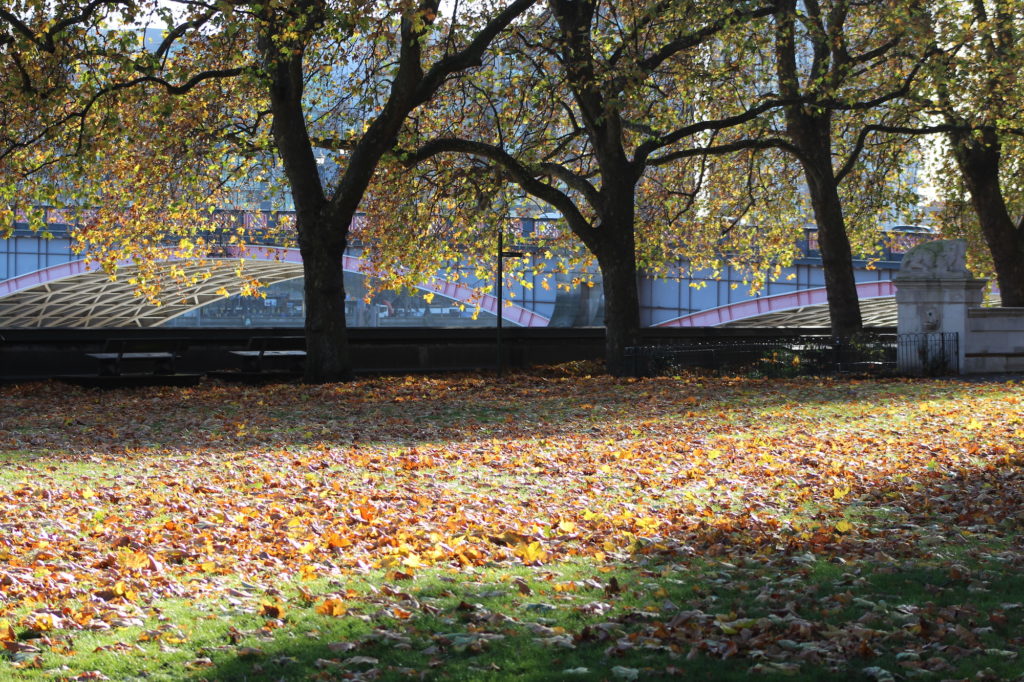
By 1894 the O.S. map names Victoria Tower Gardens for the first time, and depicts them roughly as a square separated from the space adjacent to the House of Lords. Planted with trees, with an outside path, a circular path in the centre and one leading to Great College Street, the gardens are clearly established. Some of the wharves, though not named, are still in place at the southern end right up to Lambeth Bridge. The flour mills and cement works are still present and there is a new pumping station. In 1900, the London County Council (Improvements) Act, Section 8, states that the southern part of Victoria Tower Gardens “shall be laid out and maintained…for use as a garden open to the public and as an integral part of the existing Victoria Tower Garden”.
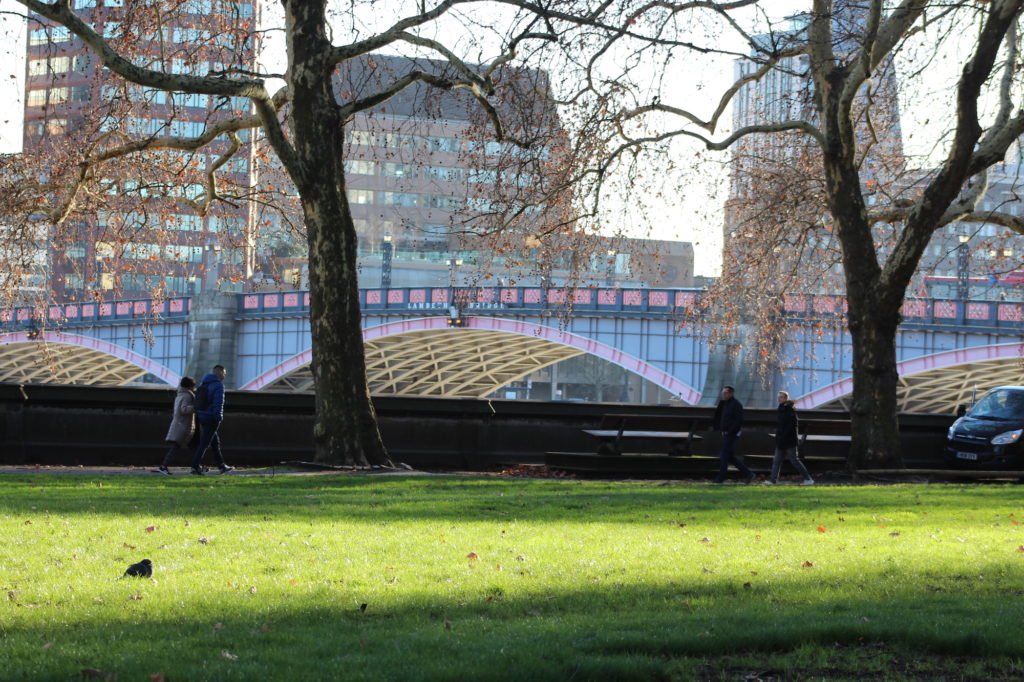
The 1914 O.S. map, not published until 1935, shows how the gardens were extended to their present layout with the trees planted as they remain today, bordering the park along Millbank and fringing the Thames Embankment.
A children’s playground was added in 1923, as a gift from local paper merchant Henry Spicer to provide “an exciting and safe area for children, especially those from poorer neighbourhoods.” Now named Horseferry Playground, after the old ferry that existed for many years roughly on the site of Lambeth Bridge, it has recently been imaginatively re-designed. Children enjoy the sandpit, water feature, swings, slide and dance chimes, which ring out surprisingly melodious tunes. A happy and much-used place.
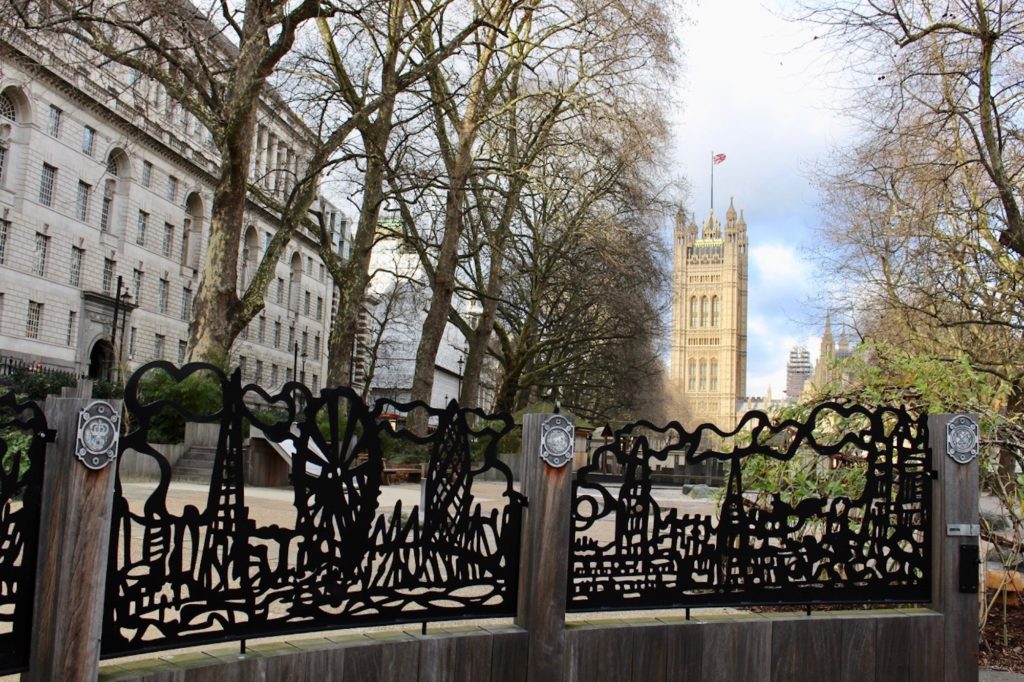
Part of the playground and entrance to the public toilets is fenced off by Thames themed railings depicting familiar skylines by Chris Campbell. In the opposite corner you can buy drinks and pastries.
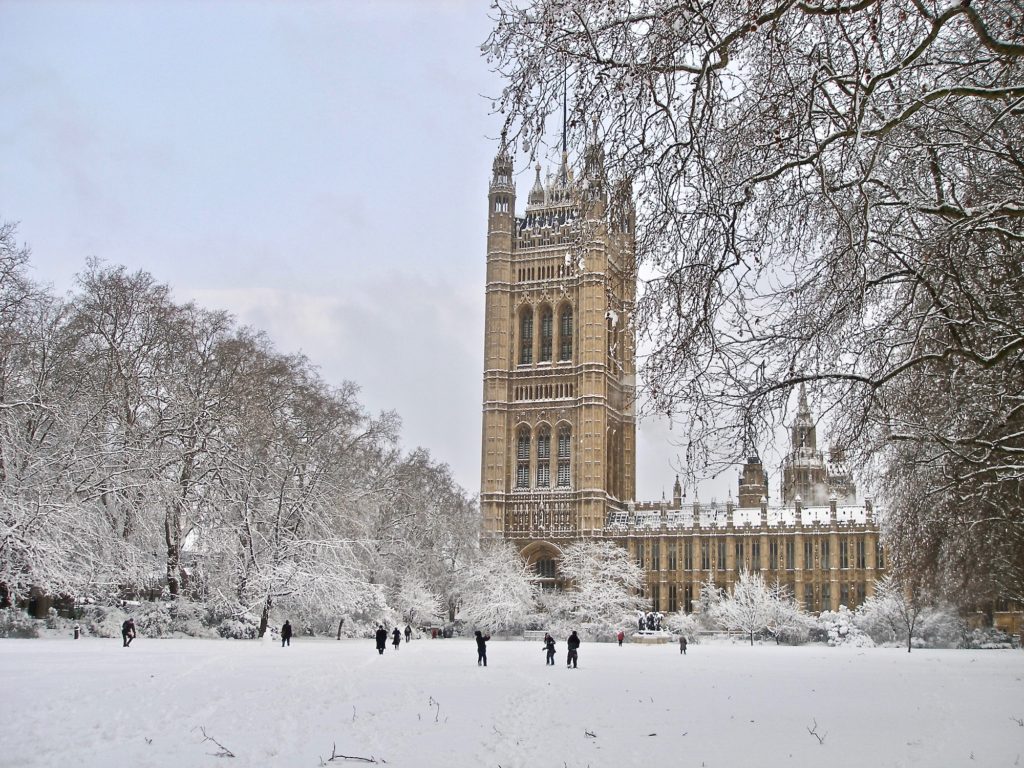
There is a *temporary* Education Centre, next to the House of Lords, well-used by schools to teach their pupils about the workings of the Palace of Westminster. Unfortunately, though every effort was made to blend in the structure by planting some of the roof area, it cuts into the fine perspective of the House of Lords from the south and disrupts the view of Rodin’s Burghers of Calais against the Gothic architecture. Hopefully it will be dismantled as planned, when the massive task of renovating the parliamentary buildings is completed.
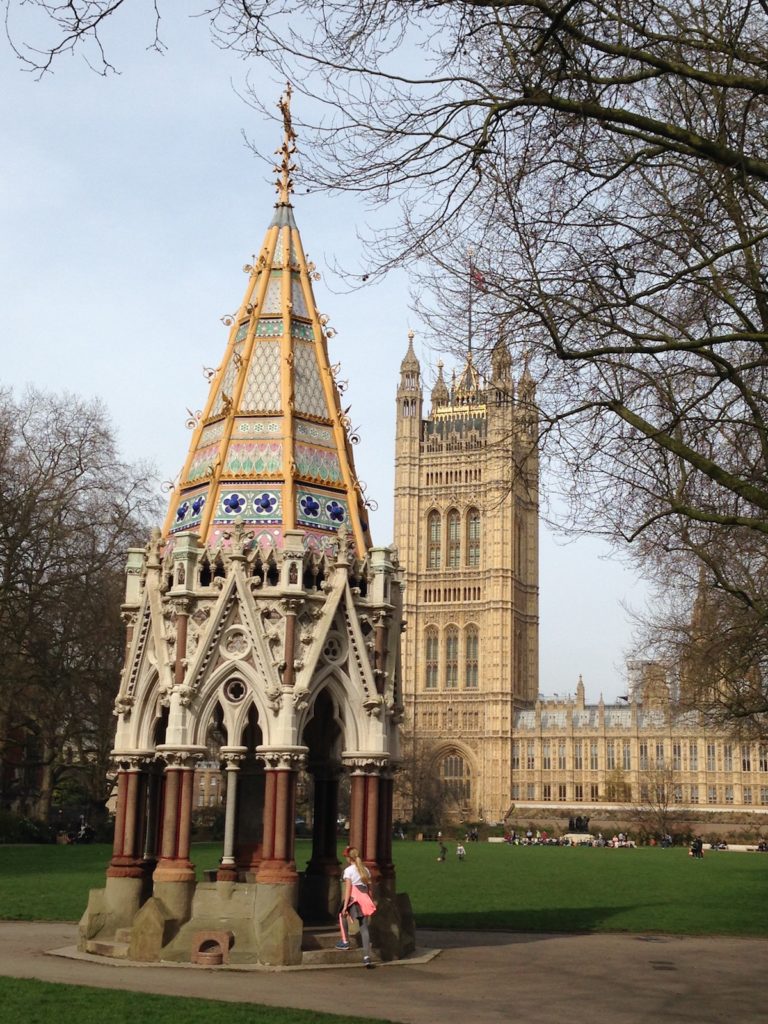
The gardens are home to three fine memorials. The oldest is the Buxton Memorial, made in 1866 to commemorate the Abolition of Slavery. Commissioned by Charles Buxton MP, it is dedicated to his father Thomas Buxton and others, who were actively involved in the abolition of slavery. It originally stood in Parliament Square, was moved during alterations to the Square in 1949, and installed in Victoria Rower Gardens in 1957. It is much treasured by Britain’s Afro-Caribbean community.
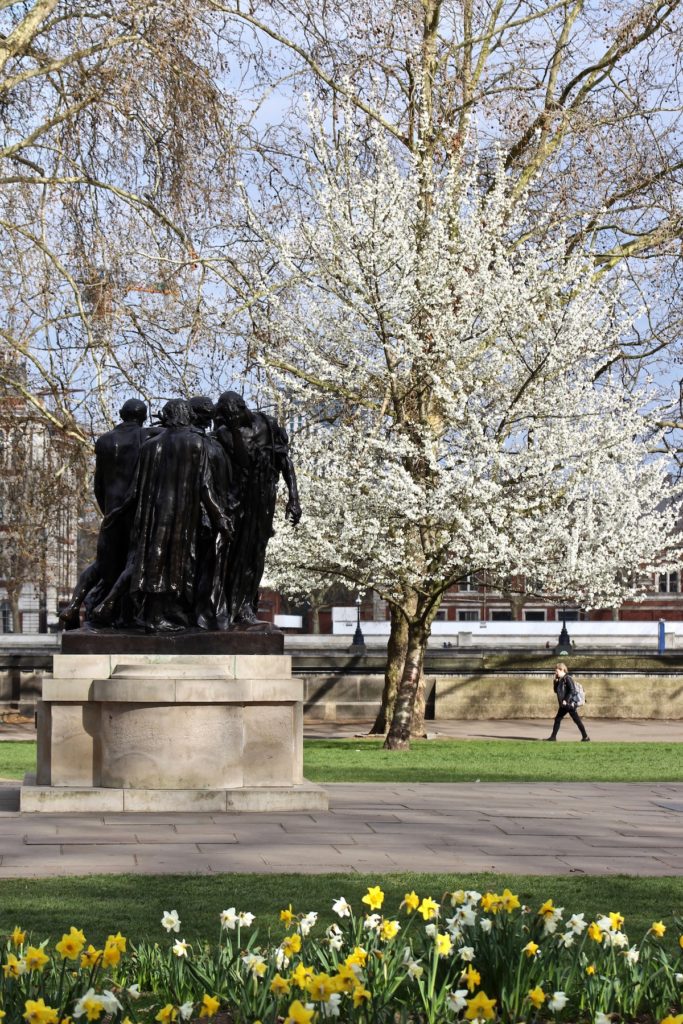
In 1911, Rodin’s The Burghers of Calais, one of the four casts of his original 1889 sculpture, was bought by the National Art Collections Fund (now the Art Fund) and installed in Victoria Tower Gardens in 1914.
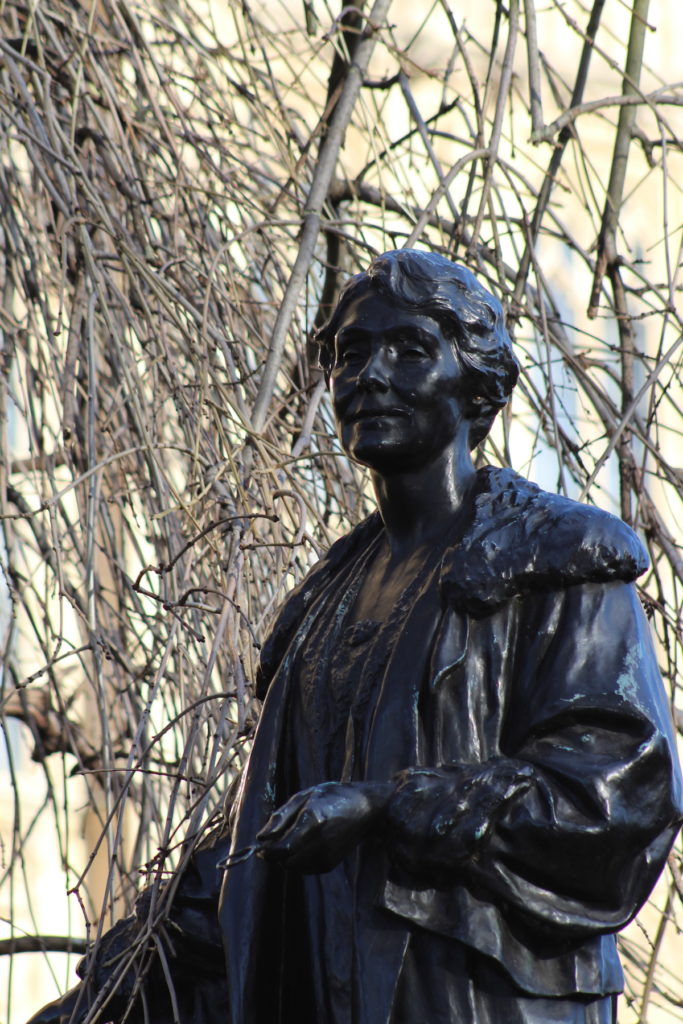
The third of the three memorials in the gardens is a fine statue of Emmeline Pankhurst sculpted by A.G. Walker in 1939. To begin with it was installed towards the middle of the green but moved in 1956 to an even more appropriate position close to the House of Lords. Her tireless struggle to win the vote for women remains a source of inspiration to right-minded people everywhere. You can often see discreet tributes in the suffragette colours of purple, white and green at her feet. Recent attempts to have her statue removed to the grounds of a private university in Regent’s Park met with a storm of protest and her statue, having now been awarded Grade II* listed status, will remain where it is.
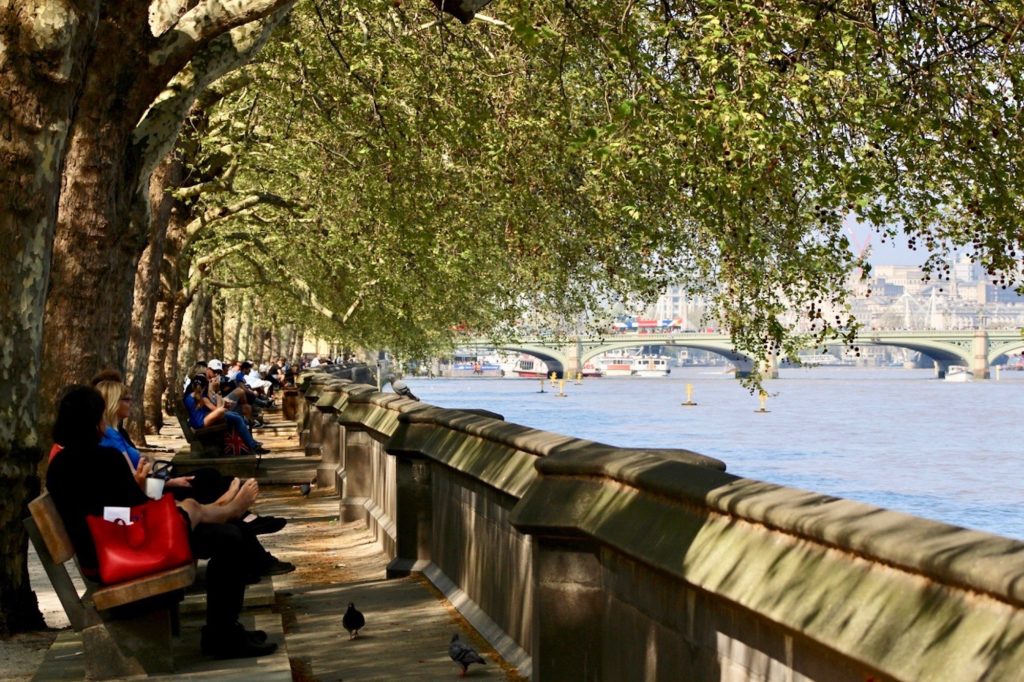
Another of attractions of Victoria Tower Gardens is its peaceful, uninterrupted views of the Thames facing Lambeth Palace and St. Thomas’ Hospital, with Westminster Bridge to the left and Lambeth Bridge to the right. Here is a calm place to watch the ebb and flow of the tide and all kinds of river traffic.
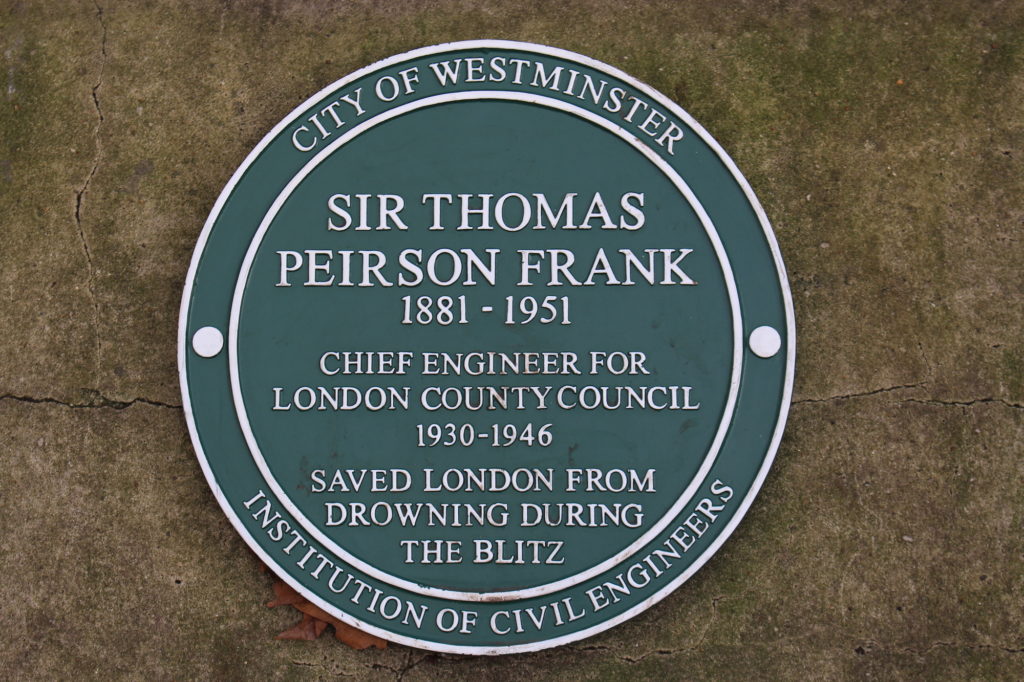
During the Second World War, a breach in the embankment wall here during a Nazi bombing raid, was swiftly sealed as the operation of a well-organised plan by Sir Thomas Peirson Frank went into action. He is commemorated on a plaque set above the repair which notes that he “saved London from drowning.”
The gardens have also been host to a number of one-off, historic and other artistic events. The most poignant of these, photographed by Getty Images on a bleak January day in 1965, was the long, winding queue of people patiently waiting to pay their respects to Winston Churchill at his lying in state in Westminster Hall.
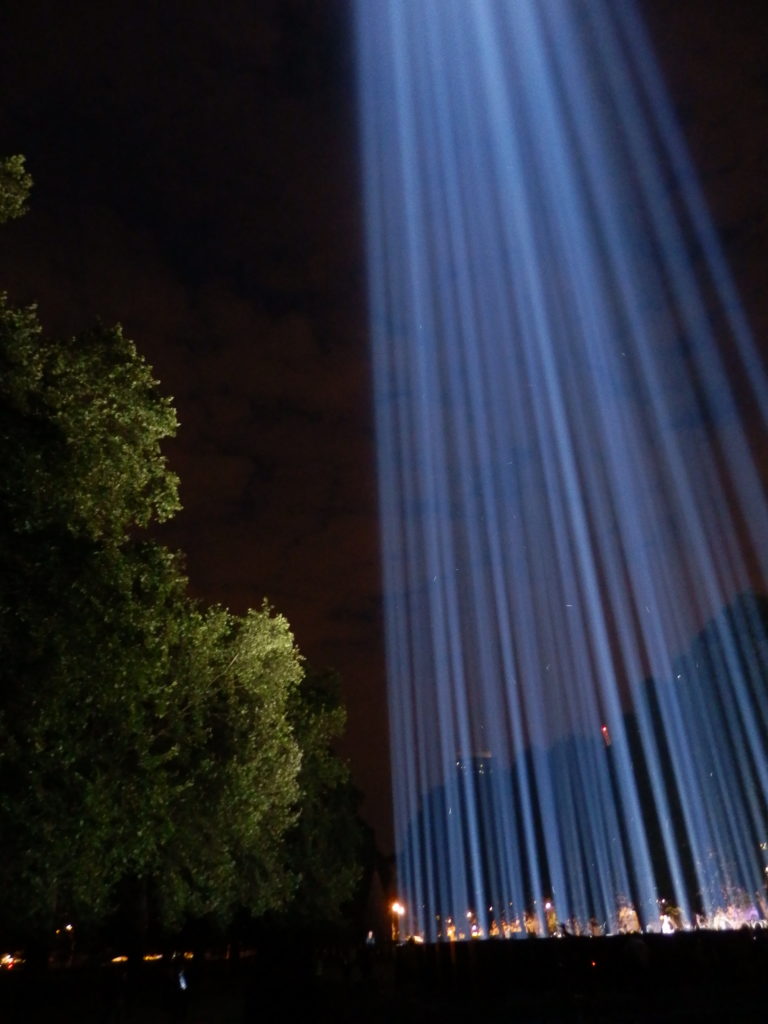
And one of the most spectacular artistic events took place in early August 2014. Spectra, a powerful beam of light devised by Japanese light artist Ryoji Ikeda, was projected into the sky to mark the centenary of the outbreak of the First World War. It was visible for miles across and around London.
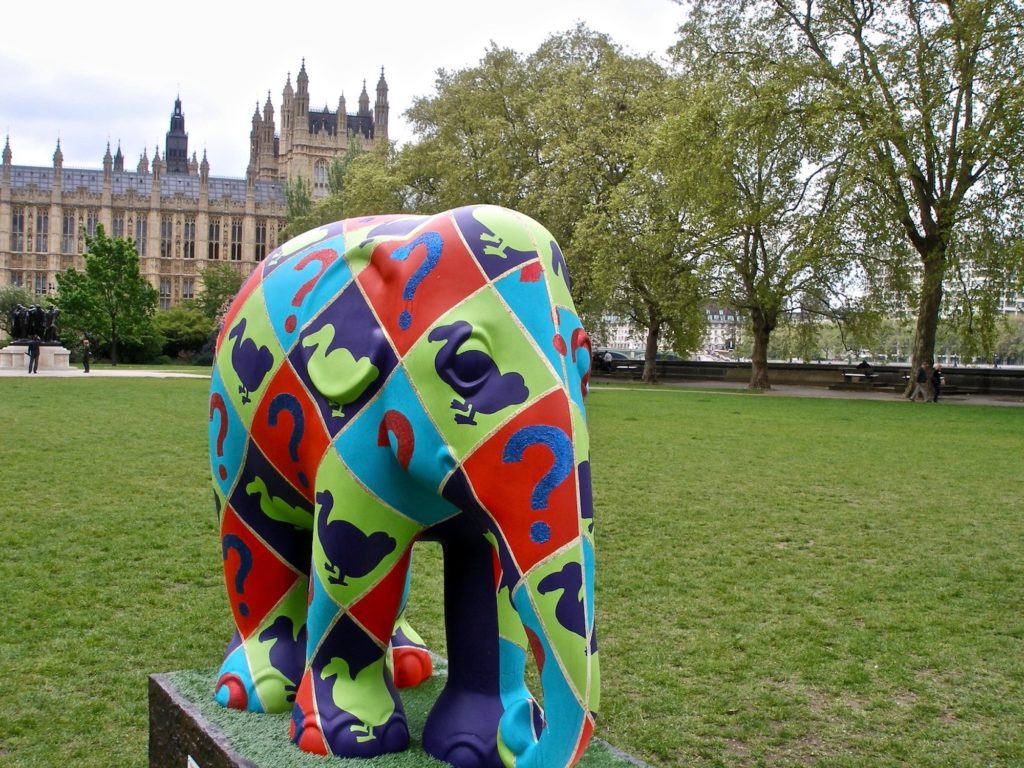
But the gardens do not just look into the past. In 2010 two decorated elephants from the London-wide ‘Elephant Parade’ were installed there as part of the conservation appeal to highlight the plight of elephants and the urgent need to protect them.
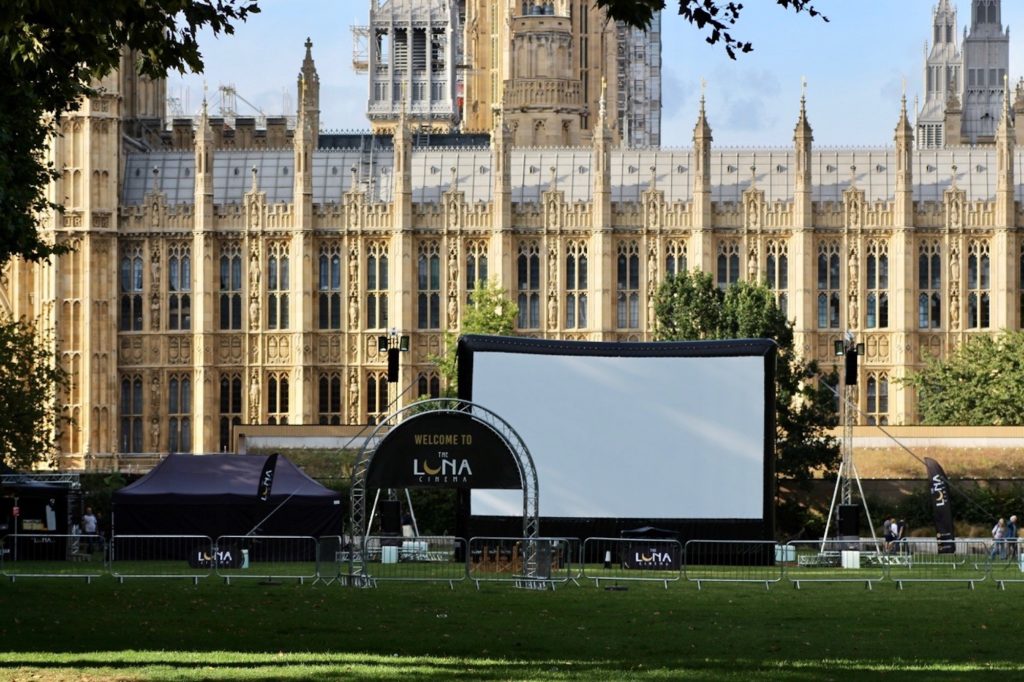
And this year, as before, Victoria Tower Gardens hosted the open air Luna Cinema, with three nights of classic cinema under the stars. A magical experience.
The setting for many serious political interviews over the years along with College Green on the other side of the road, the gardens have until now been used by MPs when they’re in a more relaxed mode. One popular annual event, sadly cancelled this year, used to take place on Shrove Tuesday, when in aid of charity, teams of MPs, Lords and journalists raced each other around a track while flipping pancakes.
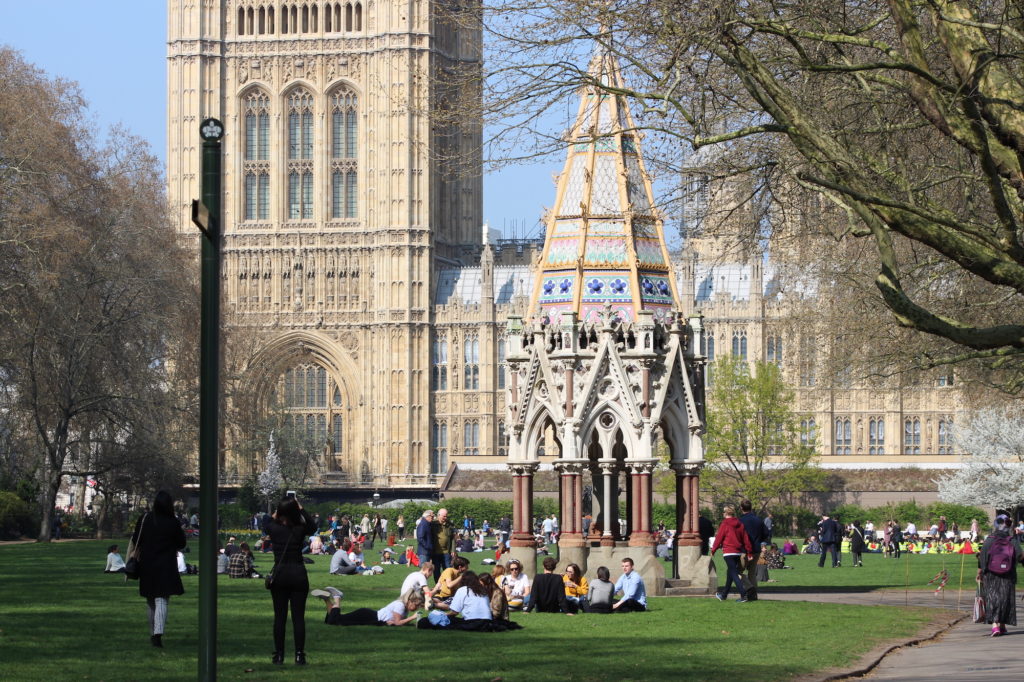
Now their future is seriously under threat and rather than a solemn and fitting memorial to the Holocaust blending in with the existing memorials, a massive, ugly structure, described by some as “a giant toast rack”, together with a substantial underground learning centre, are proposed that would dominate the park and change its character for ever. The architect Sir David Adjaye said “Disrupting the pleasure of being in a park is key to the thinking.” Times 2, 4.2.19 Needless to say, this insensitivity has sparked a fierce controversy which you can explore by clicking on the links below.
In the heart of central London, this small, green, pennant-shaped garden, with its elegant, shady plane trees and lovely views of the Thames is also with its low-key yet powerful memorials, a discreet salute to humanity, courage and liberty. It is for different reasons a precious shared space for many. Let us hope that it will remain so. The fight continues so please visit the links below and help if you can.
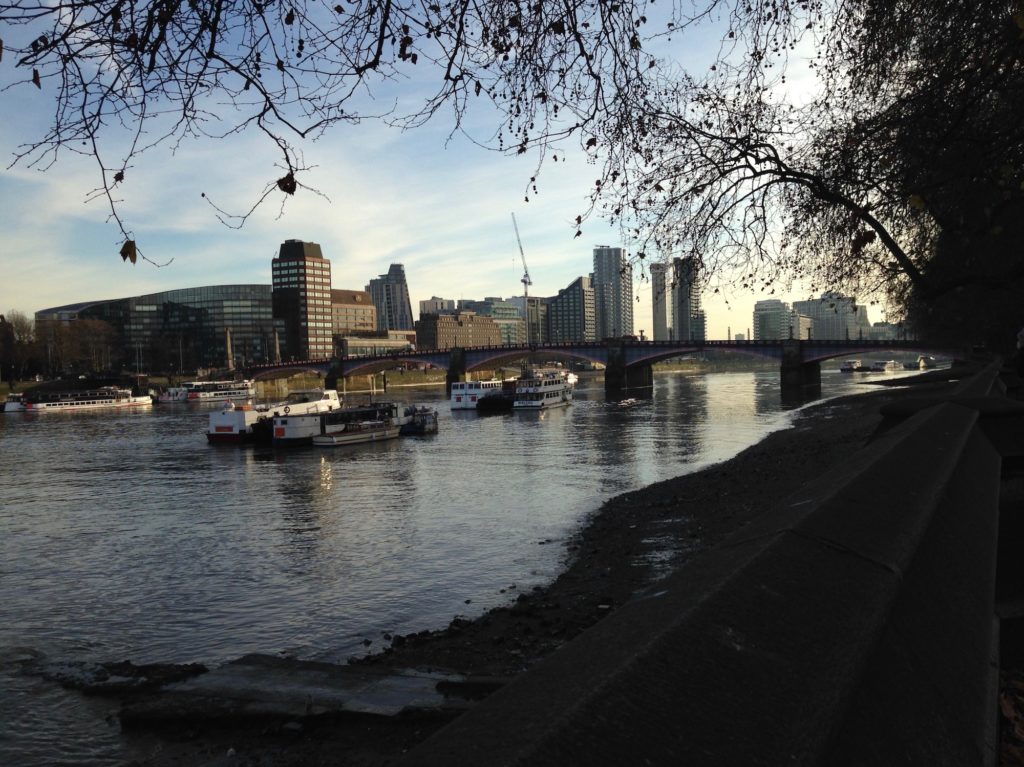
Further Information
Save Victoria Tower Gardens
@SaveVTG
See The Gardens Trust